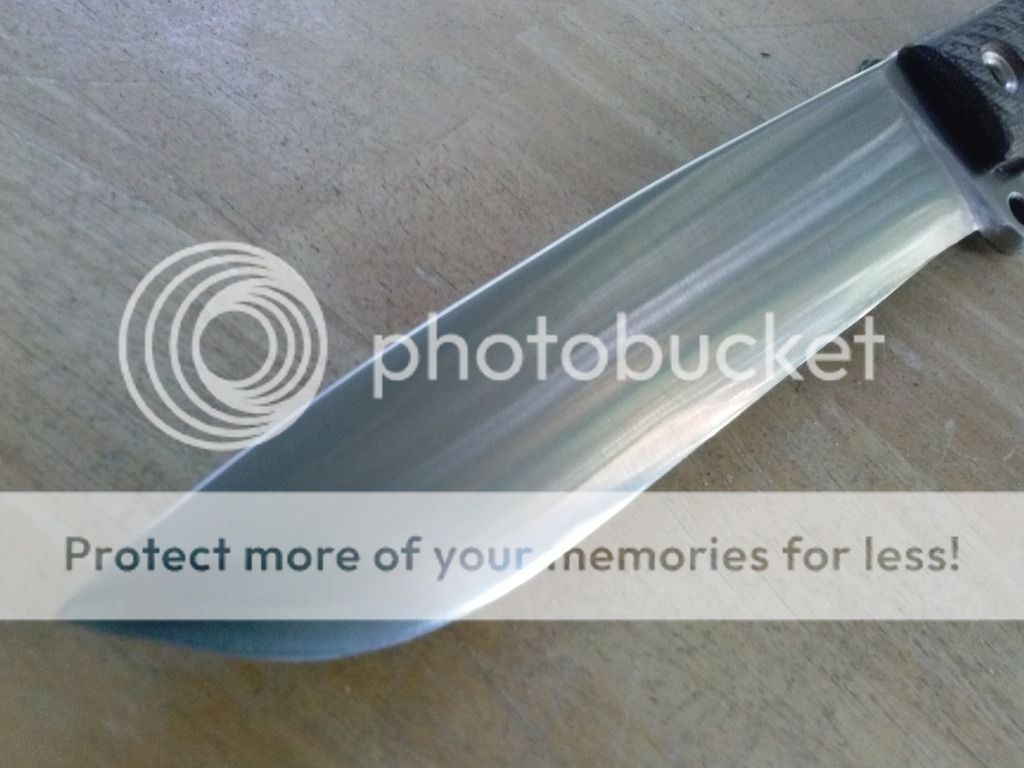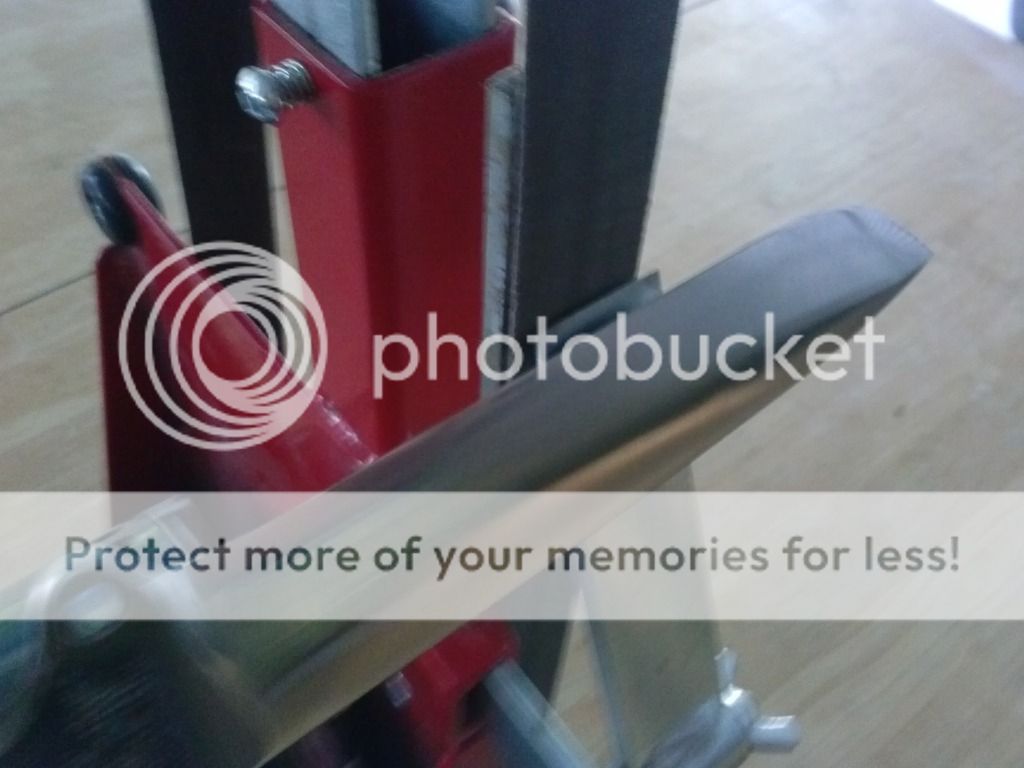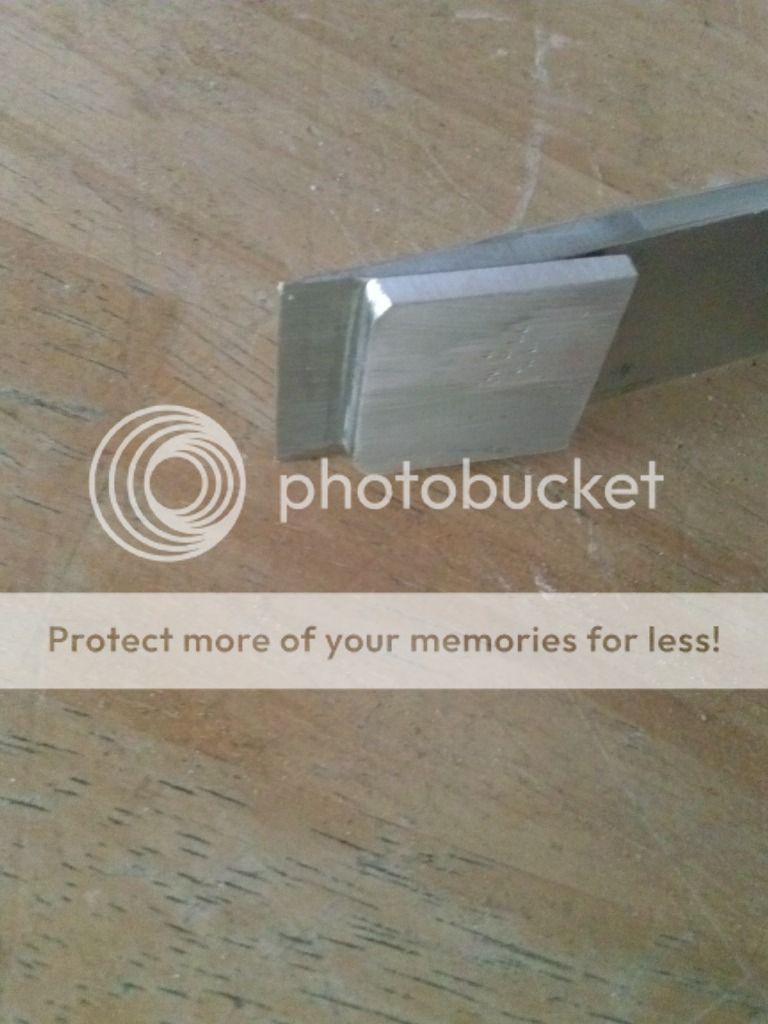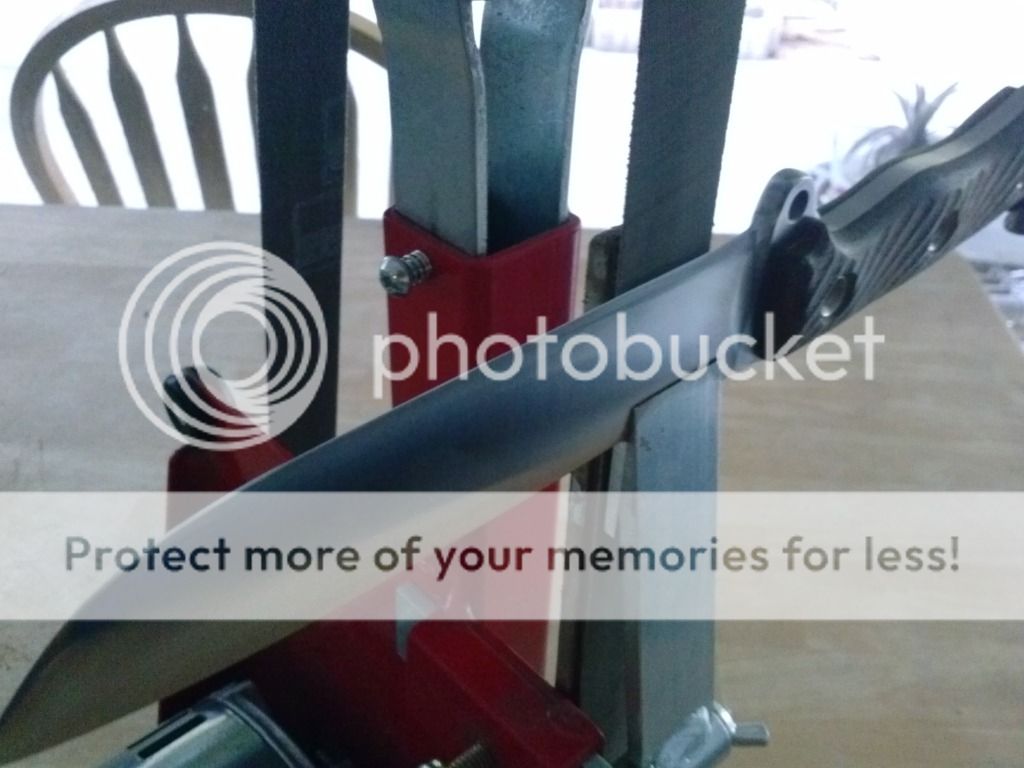1) Concerning the utility knife failure and other knives that have what would be considered too thin of an edge. By too thin an edge, you mean too small an edge angle. Yes? The 10 DPS on the utility knife for example.
When you talk about the failure of knives like this, you're saying that the resulting thickness at a failure/tear-out for too thin (shallow edge angle) an edge would be greater than the resulting thickness of a a failure with a comparatively larger edge angle - which implies that the edge stays sharper longer and more easily. Yes?
Staying with the utility blade, I would now guess that reprofiling just the edge bevel to 15 DPS would significantly increase its edge holding/durability quite a bit? Would you still consider the edge thickness (measurement behind the edge where the secondary or edge bevel ends and the primary bevel starts) too thin even for the larger edge angle? If so, what thickness would you prefer to see?
:thumbup:
A low angle reduces thickness of the edge at the same distance back from the apex. By reducing thickness, you reduce strength substantially, allowing the edge to deform and then fracture in ways which a slightly thicker edge would not under the same stress due to its higher threshold of strain prior to deformation/fracture. **EDIT** Important note: this only matters IF you achieve that threshold! If you don't, then your edge is sufficiently durable for the task at hand and, as always, thinner cuts better. Don't go making your straightrazors and sushi knives thicker for no reason

** In addition, when the level of stress required to induce fracture in the thicker edge
is achieved, the amount of deformation will be far more limited than would be the case for the thinner edge subjected to the same stress as it is WAY above its threshold. Obviously there is a limit to this, namely when durability is at/above the threshold such that increased thickness only detracts from cutting performance.
In the SEMs posted above, note the scale of the images and also the amount of stress applied and then the damage sustained. The edge of the razor, honed at 15-20 inclusive, folds to an apex-width ~4 microns after a few centimeters of paper. The pocket-knife, honed at 40-inclusive, is squashed to an apex width of ~6 microns
after 20 feet of doubled cardboard - that's ~500X more cutting through MUCH stiffer material. Neither knife would be suitable for shaving now, but imagine the damage that the razor would have suffered in the cardboard! And the pocket-knife will be easy to restore by grinding away the "cheeks" of squashed material, the razor lost much more bevel-height due to its deformation cutting through much less and less harsh material. The pocket-knife held a narrower apex (i.e. stayed sharper) longer and will be easier to restore.
Regarding resharpening the utility blade to 15-dps, that is
exactly what i do after wearing down my edges on them, and I'm happy with it, but most people simply replace the blade. This gives you a stronger edge. If you need a stronger
blade then you need something thicker in the primary, and utility blades come is 0.017, 0.025, and even 0.035 stock thickness.
Here is a schematic of edge angles superimposed at the apex and superimposed at the bevel:
2) Scandi Grinds. I've never actually measured the grind angle, but I'm guessing, for a true zero grind, that they fall somewhere between a "normal" primary grind angle, a bit larger, but substantially less than say a 15 DPS grind that would get way too thick too quickly?
I have a Mora "Heavy Duty" (1/8" thick model), the edge-angle is ~14-dps and YES, being a Scandi i.e. low saber and no microbevel, it achieves full thickness VERY fast, sucks at most cutting chores in comparison to knives with a proper 3-5 dps primary bevel and a 15-20 dps microbevel. I also have a Jarvenpaa Aito that is ground to ~9-dps but needs a microbevel due to fragility issues like the utility knife. Because of the thick Scandi design, the blades, while strong back from the edge, are fragile at the apex and begin to wedge very quickly on deeper cuts :thumbdn: Add to that how much material needs to be removed from a scandi-grind in order to maintain that "zero" grind ... I just don't get it.
3) Busse. I guess it depends on what model you're talking about, but, and if you don't mind, to what thickness (and angle) are you taking your Busse edges where they give you better performance but are not significantly compromised? I'd love to try (or have Josh) try the same for some of mine.
There are many here who probably have more experience for a frame of reference, but for me "compromised" is how thin I can take them for the tasks I am putting to them. For "hard use" - may involve lateral prying, impacts with bone or rock or metal - I like them ~0.020 to 0.030" and 15-20 dps to the apex, that is where most of them are at. For general utility, carving, hunting/butchering, down to ~0.012". For lighter-use / slicing performance, down to 0.005 - my only Bussekin this thin is my Scrapmax at ~0.010".
4) Edge Thickness Measurements. I use a decent set of calipers and a loupe, but don't have a lot of confidence in the precision of my measurements. Any wisdom for taking this type of measurement?
Do your best, take multiple measurements at the same position and other positions along the edge. I use a digital micrometer accurate to 0.001", but being off my a few thousandths of an inch doesn't make much difference and honestly will change the next time you sharpen. We aren't working in the submicron scale in our efforts, the SEMs just help to clarify our understanding of reality

5) Edge Profile Example Recap. It looks like the AEB-L profile would be a great slicer in the kitchen as long as it was treated properly. The Spyderco might be the best all around performer. It looks like it is thinner behind the edge than the utility blade but has the higher edge angle. The Izula, is probably the most stout, but not the cutter/slicer that the other's are. The Izula might be a good smaller all around do everything camp/heavy use knife?
:thumbup: I thoroughly agree with your assessments.
And I too apologize if this is to much of a derailment, and also appreciate correction if anything I've posted here is totally wrong.
Also, that is a really nice finish on that Busse,
FTR-14c!



















